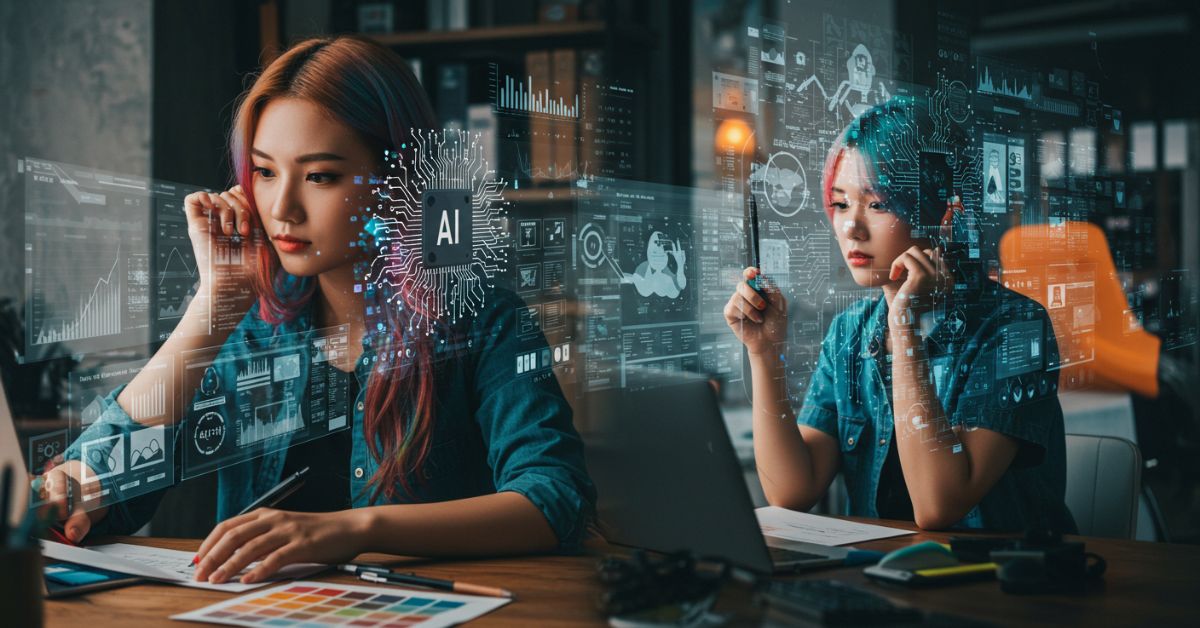The digital landscape is evolving at a pace unlike anything we’ve seen before. Businesses once focused only on attractive websites with strong branding and smooth navigation.
Artificial intelligence (AI) transforms how websites are designed, developed, and experienced.
From personalized content delivery to automated design adjustments, AI transforms websites into more innovative, adaptive tools that can directly influence business growth.
In this article, with the expert help of web development Chicago, we’ll explore how AI impacts website design, why it matters for businesses of every size, and what key opportunities you should not overlook.
Contents
The Role of AI in Modern Website Design
Traditionally, website design revolved around aesthetics, functionality, color schemes, layout, user flows, and responsiveness.
AI brings a new intelligence layer by analyzing user data and behavior to create highly customized experiences.
Instead of static, one-size-fits-all pages, AI allows websites to become dynamic, learning platforms that adapt to visitors in real time.
For example, an e-commerce site powered by AI can highlight different products based on a shopper’s browsing history. At the same time, a service business can adjust its calls-to-action based on a user’s location or intent.
This doesn’t just make websites more engaging; it makes them more effective. Businesses can guide visitors down optimized paths that align with customer goals while improving conversion rates.
Personalization at Scale
One of the greatest strengths of AI in web design is personalization. In the past, tailoring user experiences required complex segmentation and manual adjustments.
With AI, personalization is automatic and scalable.
- Content recommendations: AI tools can suggest blog posts, case studies, or product pages based on visitor interests.
- Dynamic visuals: Design elements, such as banners, colors, or layouts, can be adjusted according to the user’s profile.
- Localized experience: AI can automatically adapt language, currency, and offerings to the user’s region.
When businesses deliver content and design that resonates with each visitor, engagement increases and bounce rates drop.
This personalization was once reserved for big-budget companies; now, it’s within reach for small and mid-sized businesses too.
Smarter User Experience (UX)
User experience has always been central to good design, but AI enhances it by predicting and addressing pain points before they appear.
- AI chatbots and virtual assistants help users find answers instantly, reducing frustration and freeing up human teams.
- Predictive search improves navigation by anticipating what users want before they finish typing.
- Accessibility tools powered by AI can adjust contrast, add alt-text, or even provide real-time translations, making websites more inclusive and accessible.
These features not only improve usability but also build trust. A website that “understands” its visitors is far more likely to keep them engaged.
Data-Driven Design Decisions
Design has always balanced creativity with best practices, but AI adds a layer, revealing patterns in user behavior that can inform design updates and enhancements.
For instance, heatmaps and session recordings enhanced by machine learning can show exactly where users lose interest.
AI can suggest layout changes, predict which headlines will convert better, or test multiple design versions simultaneously (multivariate testing).
This removes guesswork from design and empowers businesses to make continuous improvements confidently.
Cost and Time Efficiency
AI doesn’t just make websites smaller; it makes the design and development process faster and more cost-effective. Automated design tools can create wireframes, generate code snippets, or optimize images in seconds. What used to take hours of manual work now takes minutes.
For businesses, this means:
- Quicker launch times for new websites or redesigns.
- Lower development costs by reducing repetitive tasks.
- More resources available for strategy, branding, and creative innovation.
Instead of replacing human designers, AI allows them to focus on higher-value tasks while routine work is automated.
The Risks of Ignoring AI in Web Design
Businesses that fail to adapt risk falling behind. Today’s customers expect speed, personalization, and seamless digital experiences. A website that looks good but doesn’t deliver these intelligent features may come across as outdated.
Competitors who leverage AI will engage users better, convert more efficiently, and reduce costs, all advantages that directly impact market share.
Ignoring AI in web design isn’t just about missing an opportunity; it can mean losing relevance altogether.
Preparing for the Future
AI in web design is not a passing trend. It is becoming a standard part of businesses creating, maintaining, and optimizing their online presence. The opportunities are vast and growing from personalized content and predictive UX to automated design tools.
For businesses, the message is clear: AI isn’t optional anymore. It’s an essential tool for staying competitive in the digital age.
By embracing AI-powered web design today, you set the stage for more intelligent customer engagement, efficient processes, and long-term growth.
